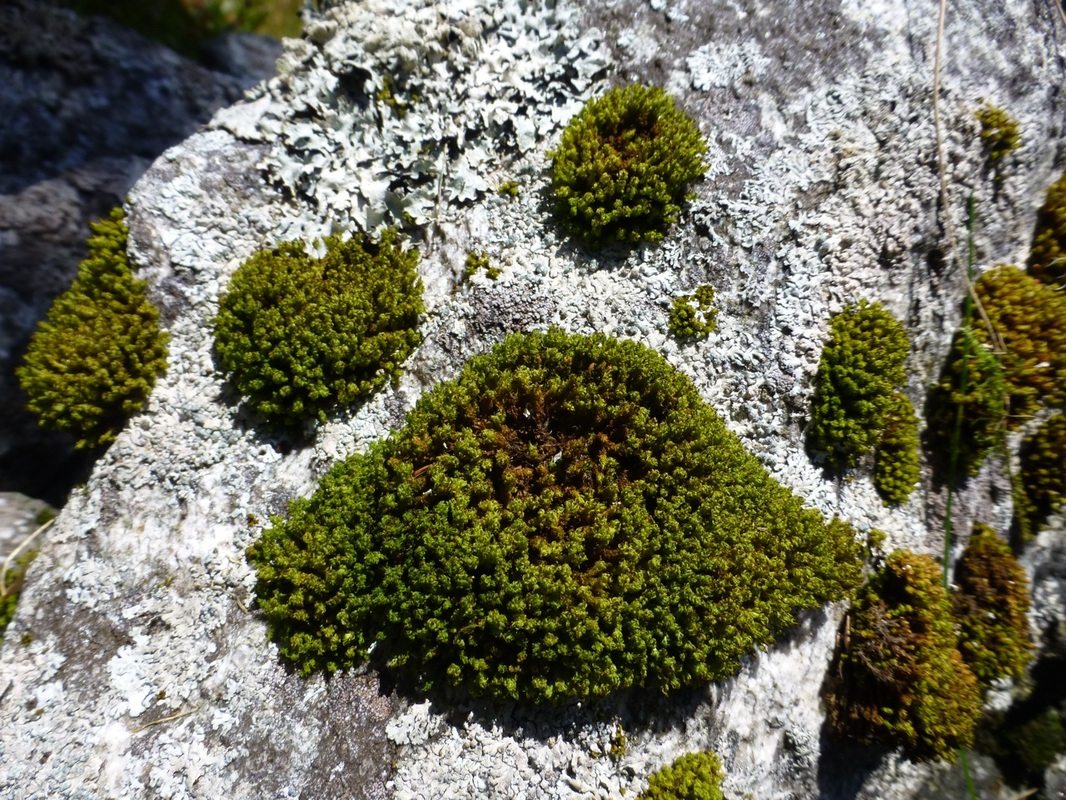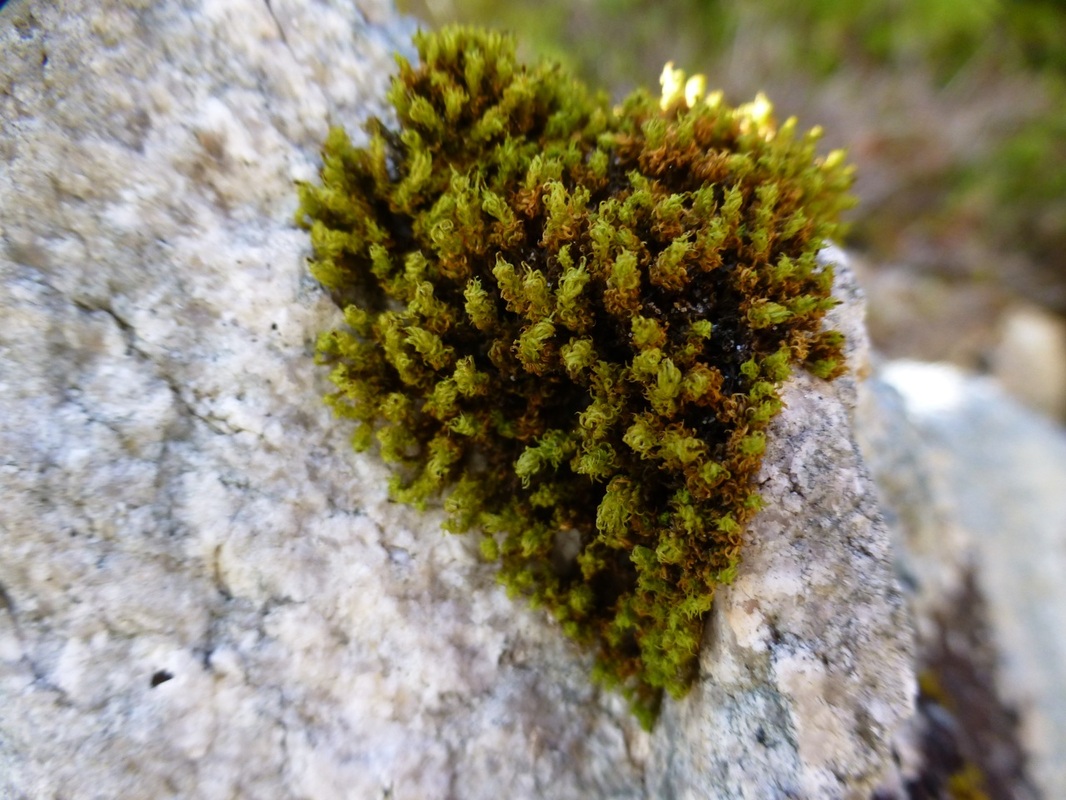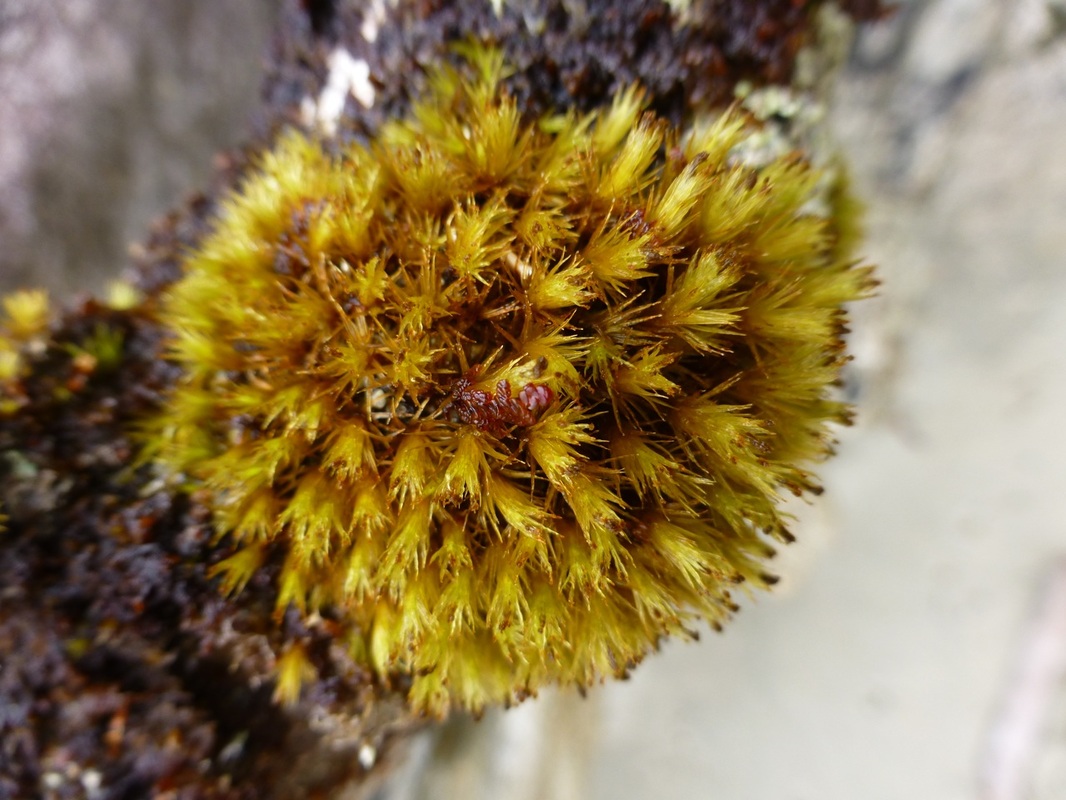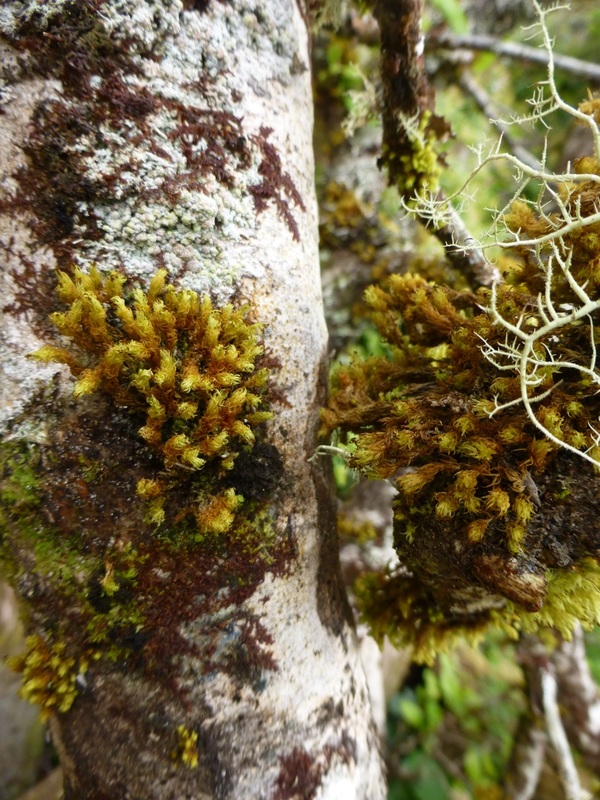Frizzled pincushion • Ulota phyllantha
Identification
Species in the Ulota genus form dense cushions and, when dry, have contorted leaves. The ends of frizzled pincushion plants are light olive-green, and the bases are darker and reddish-brown. The leaves are straight when when wet (as in the top photo) and curled when dry. The stem tips bear clusters of dark brown brood bodies (gemmae). Click here for further identification details.
Habitat & Range
Frizzled pincushion grows epiphytically on tree trunks and branches. It occasionally grows on rocks as well. It occurs in coastal areas, where it receives salt spray.
Similar Species
Other species of the Ulota genus found on the BC coast include twisted ulota (U. obtusiuscula), which doesn't bear dark brood bodies, and U. megalospora, which has creeping main stems. The leaves of Lyell's bristle moss (Orthotrichum lyellii) do not curl when dry.
Species in the Ulota genus form dense cushions and, when dry, have contorted leaves. The ends of frizzled pincushion plants are light olive-green, and the bases are darker and reddish-brown. The leaves are straight when when wet (as in the top photo) and curled when dry. The stem tips bear clusters of dark brown brood bodies (gemmae). Click here for further identification details.
Habitat & Range
Frizzled pincushion grows epiphytically on tree trunks and branches. It occasionally grows on rocks as well. It occurs in coastal areas, where it receives salt spray.
Similar Species
Other species of the Ulota genus found on the BC coast include twisted ulota (U. obtusiuscula), which doesn't bear dark brood bodies, and U. megalospora, which has creeping main stems. The leaves of Lyell's bristle moss (Orthotrichum lyellii) do not curl when dry.
References
Lawley, M. Ulota phyllantha Frizzled Pincushion. British Bryological Society. Accessed 29/08/2014.
Pojar, J. and MacKinnon, A. (1994). Plants of Coastal British Columbia. Vancouver, BC: Lone Pine Publishing. P. 476.
Schofield, W.B. (1992). Some Common Mosses of British Columbia. Victoria, BC: Royal British Columbia Museum. P. 304.
Authors and editors of page
Kelly Fretwell, Ian Cruickshank, and Brian Starzomski (2014).
Lawley, M. Ulota phyllantha Frizzled Pincushion. British Bryological Society. Accessed 29/08/2014.
Pojar, J. and MacKinnon, A. (1994). Plants of Coastal British Columbia. Vancouver, BC: Lone Pine Publishing. P. 476.
Schofield, W.B. (1992). Some Common Mosses of British Columbia. Victoria, BC: Royal British Columbia Museum. P. 304.
Authors and editors of page
Kelly Fretwell, Ian Cruickshank, and Brian Starzomski (2014).








